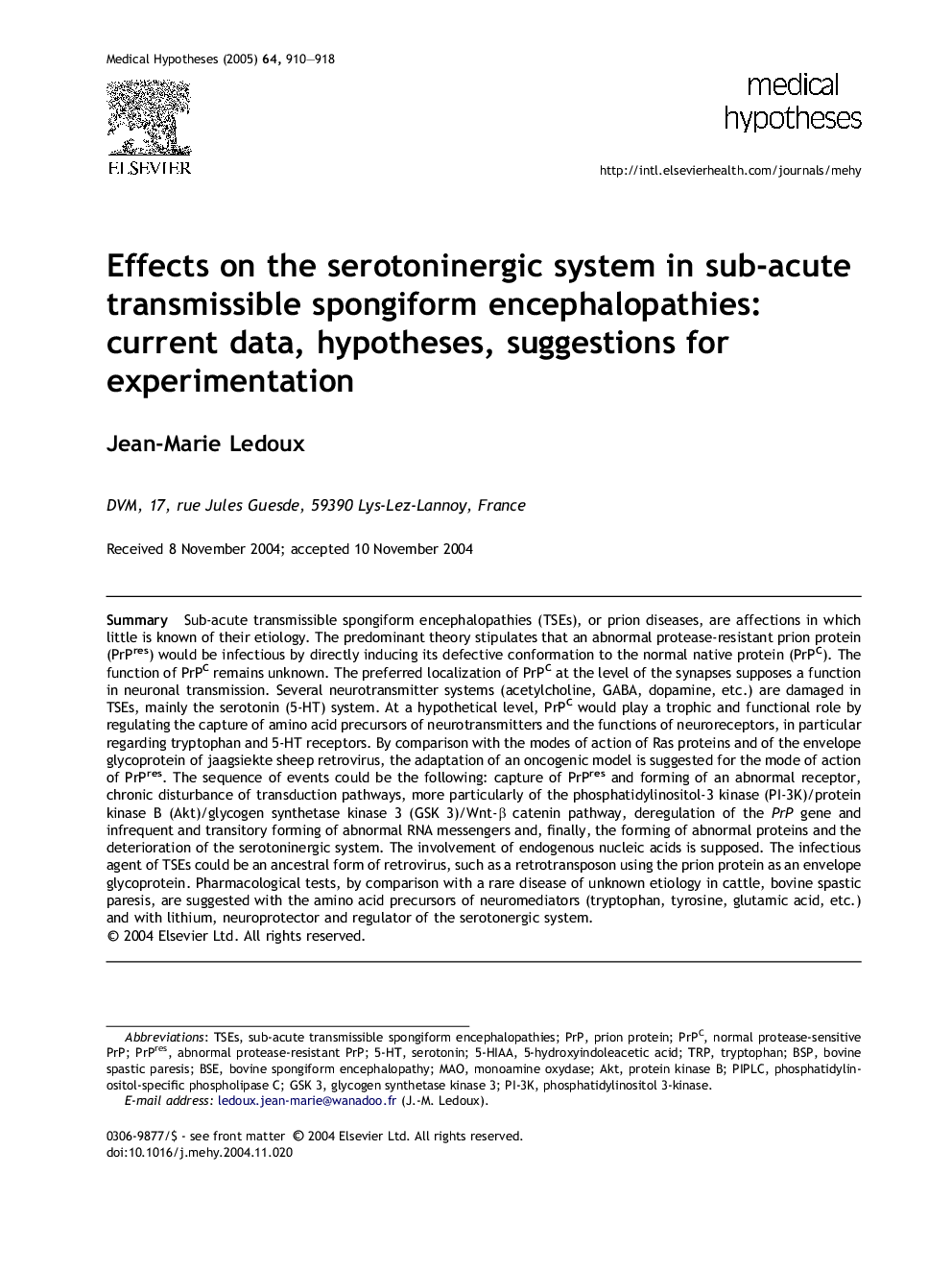| Article ID | Journal | Published Year | Pages | File Type |
|---|---|---|---|---|
| 8996679 | Medical Hypotheses | 2005 | 9 Pages |
Abstract
Sub-acute transmissible spongiform encephalopathies (TSEs), or prion diseases, are affections in which little is known of their etiology. The predominant theory stipulates that an abnormal protease-resistant prion protein (PrPres) would be infectious by directly inducing its defective conformation to the normal native protein (PrPC). The function of PrPC remains unknown. The preferred localization of PrPC at the level of the synapses supposes a function in neuronal transmission. Several neurotransmitter systems (acetylcholine, GABA, dopamine, etc.) are damaged in TSEs, mainly the serotonin (5-HT) system. At a hypothetical level, PrPC would play a trophic and functional role by regulating the capture of amino acid precursors of neurotransmitters and the functions of neuroreceptors, in particular regarding tryptophan and 5-HT receptors. By comparison with the modes of action of Ras proteins and of the envelope glycoprotein of jaagsiekte sheep retrovirus, the adaptation of an oncogenic model is suggested for the mode of action of PrPres. The sequence of events could be the following: capture of PrPres and forming of an abnormal receptor, chronic disturbance of transduction pathways, more particularly of the phosphatidylinositol-3 kinase (PI-3K)/protein kinase B (Akt)/glycogen synthetase kinase 3 (GSK 3)/Wnt-β catenin pathway, deregulation of the PrP gene and infrequent and transitory forming of abnormal RNA messengers and, finally, the forming of abnormal proteins and the deterioration of the serotoninergic system. The involvement of endogenous nucleic acids is supposed. The infectious agent of TSEs could be an ancestral form of retrovirus, such as a retrotransposon using the prion protein as an envelope glycoprotein. Pharmacological tests, by comparison with a rare disease of unknown etiology in cattle, bovine spastic paresis, are suggested with the amino acid precursors of neuromediators (tryptophan, tyrosine, glutamic acid, etc.) and with lithium, neuroprotector and regulator of the serotonergic system.
Keywords
Related Topics
Life Sciences
Biochemistry, Genetics and Molecular Biology
Developmental Biology
Authors
Jean-Marie Ledoux,
